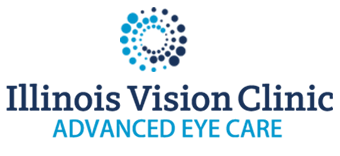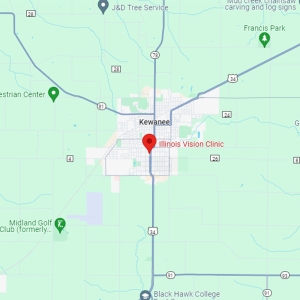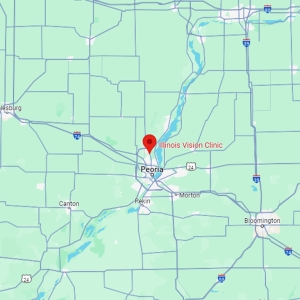Dry Eye

Dry eye is a very common eye condition that impacts many of us. While it may sound like the disease only involves dry eyes, it can also lead to problems with excessive tear production. Dry eye is a disease that impacts the layers of tears that go over your cornea. Luckily, there are many treatments available.
If you suffer from this disease, consider visiting a reliable eye care practice like Illinois Vision Clinic. Our team of eye care specialists has several years of experience treating this common condition. Contact us today for the most trusted dry eye treatment!
What Is Dry Eye?
Dry eye is a condition involving the dysfunction of the three outer layers of tears that cover your eye, called your tear film. If there are problems with these layers, you may experience symptoms like blurred vision, burning, and itching. Dry eye is a complex disease that doesn’t always have an obvious cause. That said, it’s important to work with a qualified eye doctor to find the root cause of the condition.
Types of Dry Eye
You may think those with dry eye only experience “dry eyes.” That isn’t always the case.
Take a look at the different types of dry eye below:
Aqueous Deficient Dry Eye
This occurs when your eyes don’t produce a sufficient amount of tears. It can lead to burning, itchiness, and general discomfort. Some autoimmune conditions can lead to inflammation in your lacrimal gland, which is where your aqueous tears are produced. This inflammation can prevent the production of these tears.
Evaporative Dry Eye
This happens when your tears evaporate too fast. This is usually caused by meibomian gland dysfunction. These are glands in your eyelids that are responsible for producing the outer, oily layer of your tear film. When these glands don’t work properly, the watery layer of your tear film dries up quickly, leading to symptoms.
Mixed Dry Eye
It’s also possible to have both aqueous and evaporative dry eye. This can lead to several problematic symptoms that can impact your daily life.
Dry Eye Symptoms
Many people with the condition constantly feel like there’s something in their eye. It’s also common to experience the following:
- Burning Sensations
- Itchiness
- Light Sensitivity
- Blurry Vision
- Watery Eyes
- Eye Dryness
If any of these issues are troubling you, contact our eye doctor today to get the treatment you need!
Diagnosing Dry Eye
There are a few different ways to diagnose dry eye. First, your provider will ask you questions about your symptoms and overall eye and vision health. Next, they’ll perform an eye exam, which involves a series of tests that can help determine if you have the condition. Some common tests for dry eye include Schirmer’s test, tear breakup time (TBUT) test, and a slit lamp exam.
Treatment Options
There are many different ways to approach dry eye treatment. One simple method is through the use of artificial tears, which help to soothe and lubricate your eyes.
Here are some other eye drop treatments you can try:
- Special Ointments
- Topical Cyclosporine A Eye Drops (Restasis®)
- Lifitegrast (Xildra®) Eye Drops
- Varenicline (Tyrvaya®) Nasal Spray
- Autologous Serum Drops
There are also a handful of procedures that can help, which include:
- Punctal Occlusion
- Thermal Pulsation Therapy (Lipiflow®)
- Intense Pulsed Light (IPL) therapy
Given the many treatments available, it’s important to work with our trusted eye doctor to find the right options for your needs. Contact Illinois Vision Clinic today for the leading dry eye treatment!




